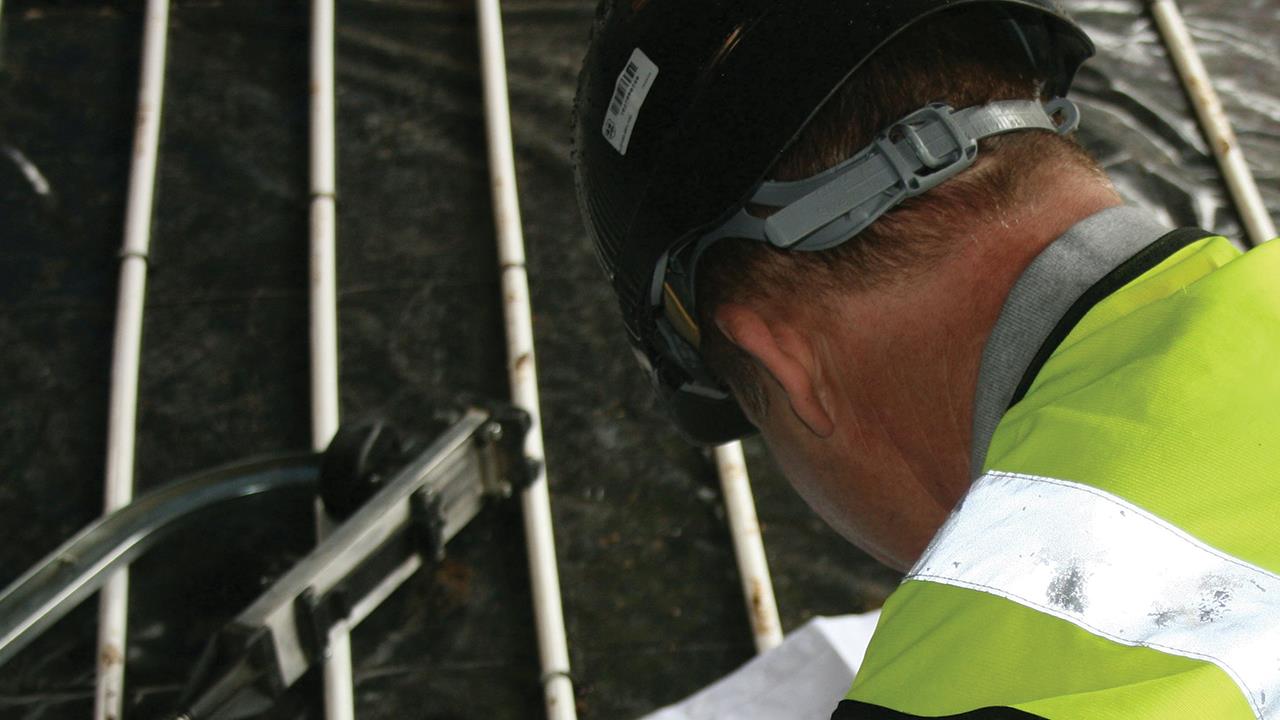

With low-temperature heating systems mandated for new builds, and the ‘new, more efficient normal’ for property renovations, up to date knowledge of the regulations and how to specify such systems is essential. When working with an air source heat pump (ASHP) or even future-proofing a property for a potential heat source update, one technology meets all the necessary criteria: underfloor heating.
Here I will answer some commonly asked questions about the new regs and low-temperature systems, ensuring installers can confidently select the most efficient system design for every project.
Which projects must adhere to the new regulations?
Marking an important step for the industry ahead of the Future Homes and Buildings Standard set to come into force in 2025, updates to Part L of the Building Regulations and to the low water temperature section were introduced in June 2022. Setting clear energy efficiency benchmarks for every residential dwelling, the new Part L standard is divided in two sections – Part L1A, which covers new builds, and Part L1B, which covers renovations and extensions to existing buildings.
New or replacement heating systems must now prove a 31% reduction in CO2 compared to previous standards, and should be sized for a maximum flow temperature of 55°C.
Part L1B recognises that it’s not always possible to meet new build standards within a renovation or extension project, however the system must still be designed to achieve the lowest achievable flow temperature. A Building Regulations England Part L (BREL) report must also be generated, accompanied by photographic evidence, demonstrating compliance with energy efficiency measures.
Why do ASHPs and UFH work so well together?
With the Future Homes and Buildings Standard on its way, and low flow temperatures already a must, low-carbon ASHPs are becoming a popular solution for both new and retrofit projects. Thanks to the naturally low temperatures required by a UFH system, which can be run as low as 30ºC, this technology can support ASHPs to achieve the highest Coefficient of Performance – the ratio between how much energy the heat pump produces and how much electrical energy it consumes.
When paired with an air source heat pump, an accurately designed and installed underfloor heating system can be up to 40% more efficient, and offer lower running costs than a conventional central heating system with radiators, leading to additional cost savings and environmental benefits.
Importantly, UFH systems also offer full zoning capabilities to meet regulatory requirements and further reduce energy wastage. The regs need to be referenced for each different project, but, in brief, each zone should have an individual heating circuit with independent time and temperature control for each zone. There are usually opportunities to save energy by matching zones to the occupants’ lifestyle, and, as such, installers must look to set up zones beyond the minimum requirements.
Can you future-proof a UFH installation for renewables?
ASHPs are a popular retrofit option for renovation projects due to the relatively simple installation process compared to ground source pumps. However, even if the site is currently fuelled by a gas or oil boiler, planning a UFH system that can support a renewable heat source upgrade can prove highly beneficial.
Whatever the site requirements, there is a UFH system to match – whether it be a new extension, where a screeded system is well suited, or refurbishment of an existing space, where a low-profile system would help to reduce the floor build-up.
Two key elements to consider when planning a truly future-proof system are pipe centres and pipe size. With the lower flow temperature from the ASHP, having the pipe centres closer than in a traditional system will ensure optimum heat output when switching to a lower-temperature heat source. The benefits of tighter pipe centres can then also be enhanced further by selecting a pipe with a larger diameter, such as 17mm, allowing it to accommodate a larger flow than with the widely specified 12mm pipe.
Whatever the scenario, precision system design is key to achieving the desired heat output, and the finished system meets the customer’s expectations. Collaborating with a supplier who can offer specialised expertise – whether providing initial CAD system designs, heat output/heat loss calculations, and controls, or technical and after-sales support – is invaluable for the success of any project. This support assures installers and customers that the system will deliver optimal performance from the outset and far into the future.
If you'd like to keep up-to-date with the latest developments in the heating and plumbing industry, why not subscribe to our weekly newsletters? Just click the button below and you can ensure all the latest industry news and new product information lands in your inbox every week.